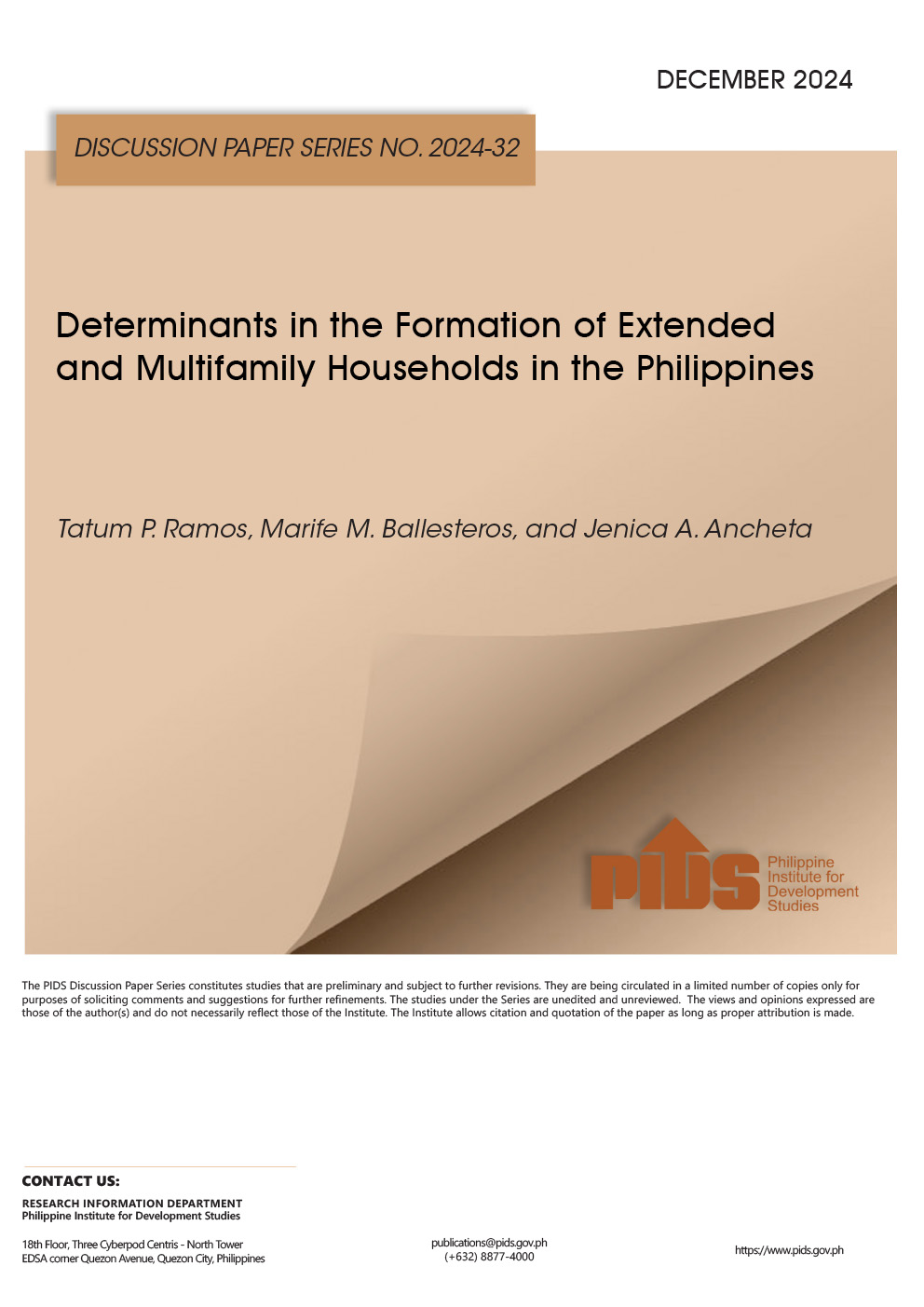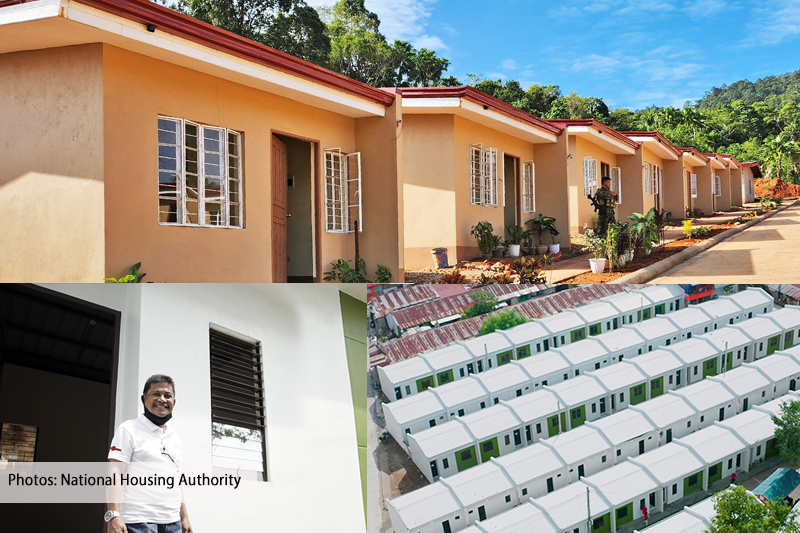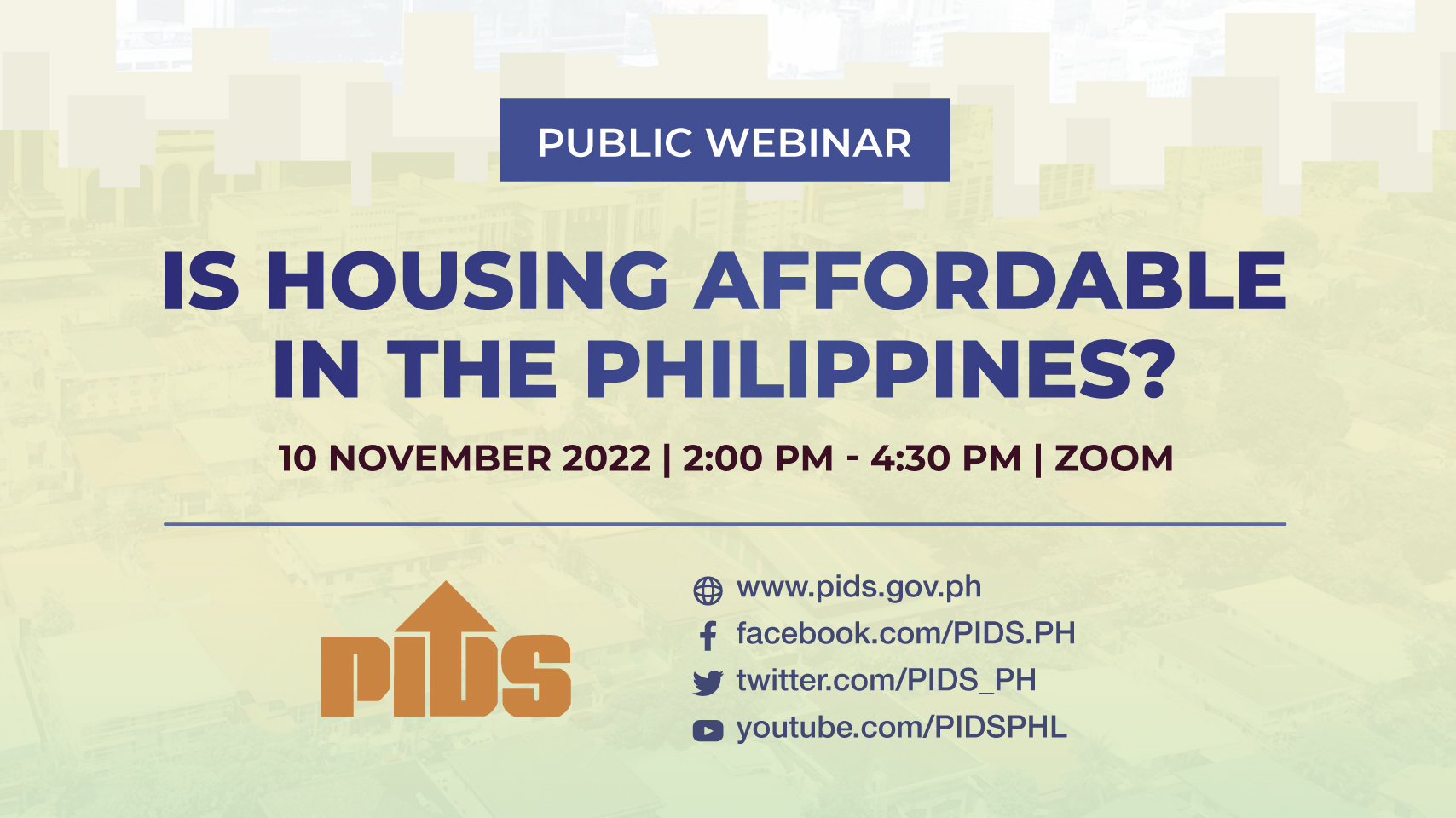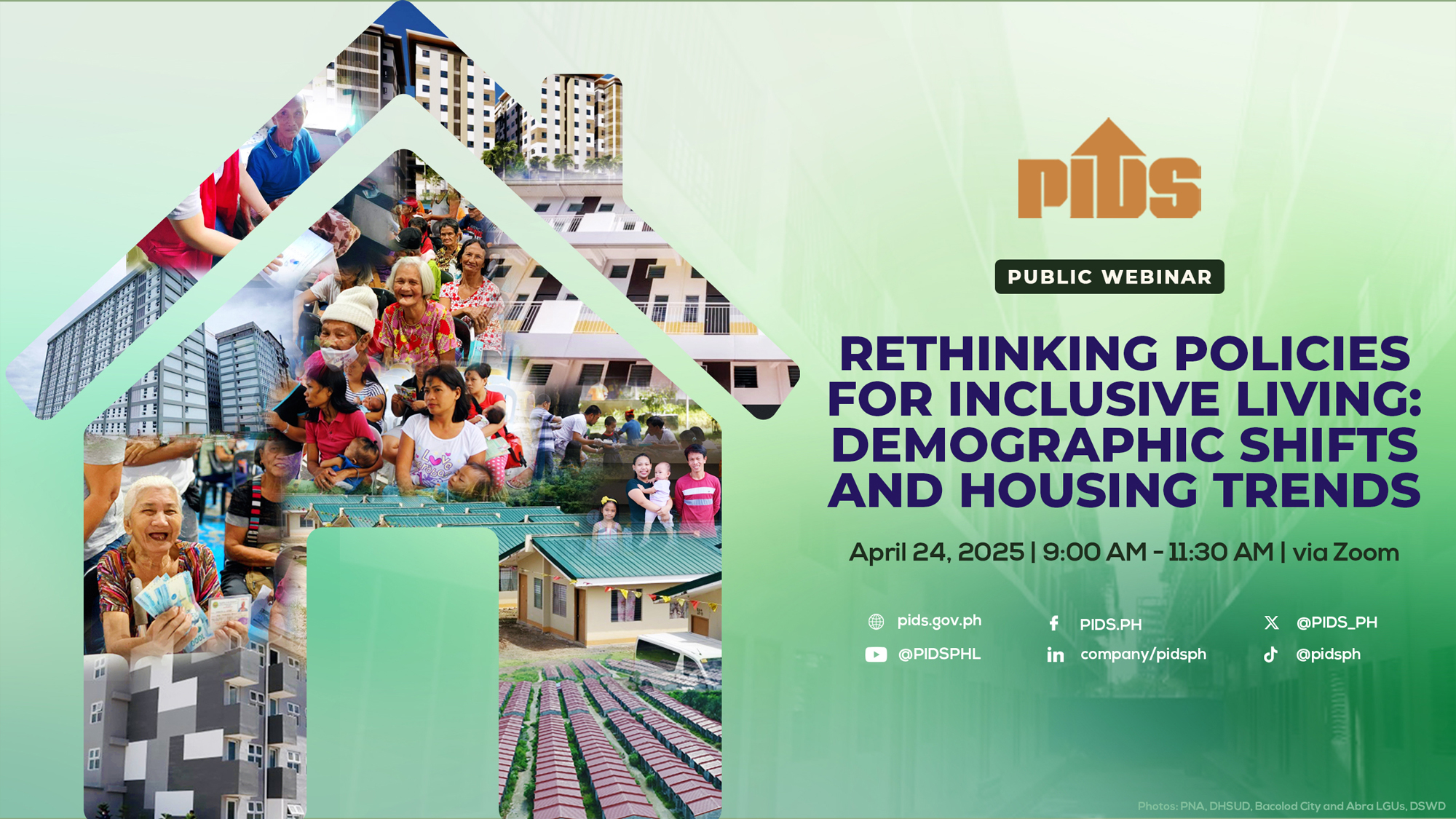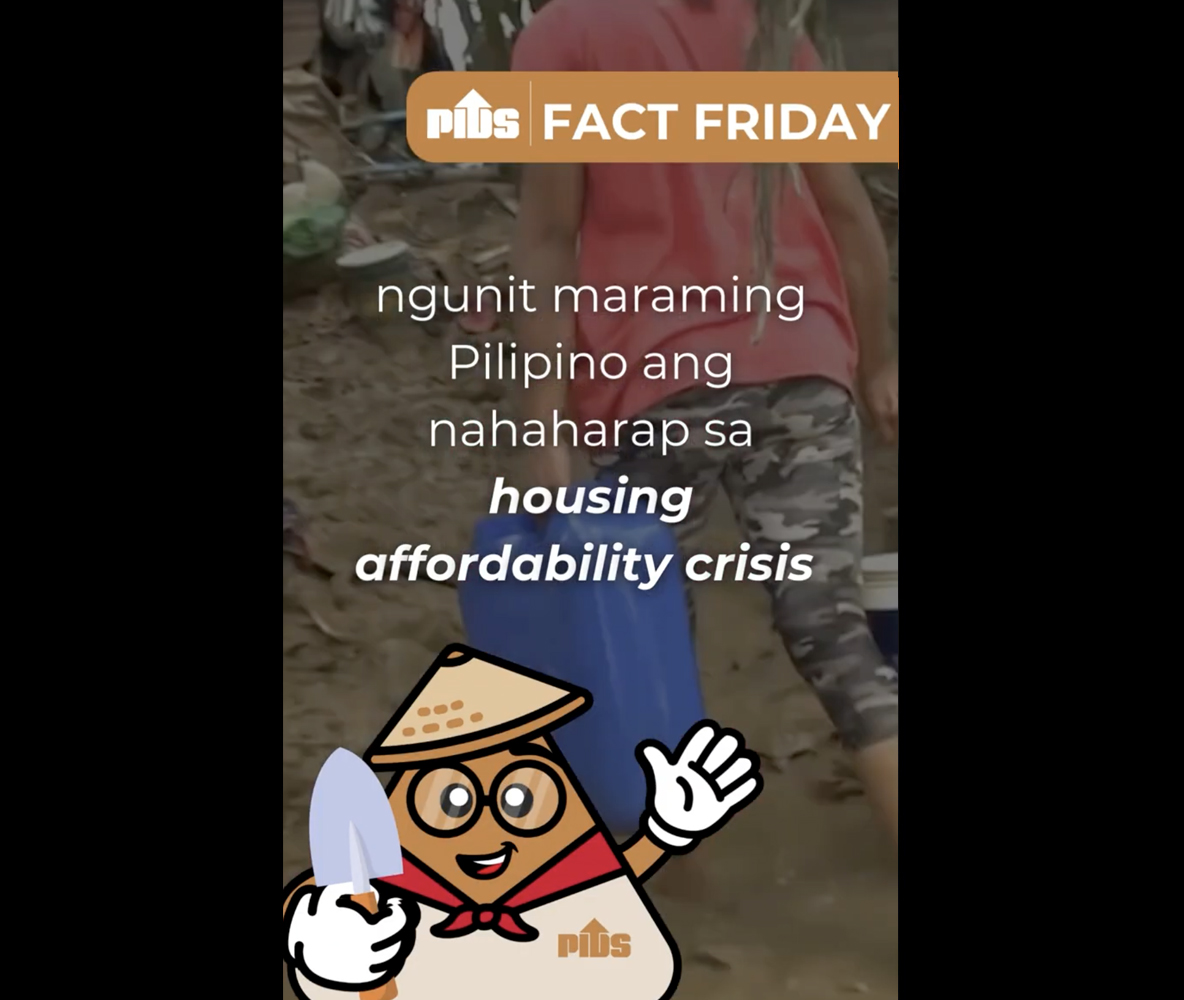The Philippines faces a growing housing crisis as its population ages and fewer young adults form households, experts warned during a webinar hosted by the Philippine Institute for Development Studies (PIDS).
At the April 24 virtual forum, titled “Rethinking Policies for Inclusive Living: Demographic Shifts and Housing Trends,” researchers and housing advocates discussed how demographic changes are reshaping housing needs and the shortcomings of current policies.
PIDS vice president Dr. Marife Ballesteros described the Philippines as being in the early stages of a demographic transition, with a significant increase in the number of older adults expected in the coming years.
“The Philippines is still in the early stages of demographic transition,” she said. “By 2030, we will already be starting the demographic transition towards an aging society.”
In 1980, 73 percent of Filipinos aged 25 to 34 headed households. By 2020, this figure dropped to 59 percent. Ballesteros said this “slowdown in the rate of household formation” could lead to lower birth rates, a slower economy, and housing insecurity for many aging Filipinos.
Dr. Mary Racelis, an urban anthropologist at the University of the Philippines Diliman, urged policymakers to consider housing beyond physical structures, particularly in Metro Manila, where informal settlers comprise about 35% of the population.
“The vast majority want to remain there because it makes total economic and family access to resources sense,” Racelis said, noting that relocation programs often disrupt crucial livelihood connections.
Racelis said “for the urban poor, housing is not just houses… Housing is the community setting environment of the economy, [it is] where people work, get their income, have access to social services, health services, and so on. So, housing must be seen in a much larger context.” She cited examples of home-based workers, such as welders and beauticians, whose incomes depend on remaining in their current neighborhoods.”
Ballesteros also highlighted emerging migration patterns. While working-age Filipinos often move from rural areas to urban centers, some return to their provinces upon retirement, a trend known as “reverse migration.”
Racelis said educated children of informal settlers often face difficult choices between staying in overcrowded cities to remain close to family or moving far away in search of affordable housing.
Speakers called for a significant change in the government’s approach to housing development.
Ballesteros cited the need for data-driven policymaking that includes marginalized groups. “We cannot continue planning without considering the most vulnerable… They have to be heard, they have to be seen in the data, and they have to be part of the planning process.”
She said that current approaches fail to adequately address the complex needs of “the elderly, persons with disability, women in rural areas.”
Racelis urged policymakers to listen more closely to grassroots communities. “A city is not just its buildings—it is its people. If we continue ignoring the housing needs of 60% of our population, we are not just failing those communities, we are failing our collective future,” she said.
Housing Developers Association executive director Santiago Ducay proposed concrete solutions, including allowing loans for non-related individuals in recognition of rising non-traditional living arrangements.
Ducay also stressed the need to prepare for an aging population by developing retirement communities with integrated healthcare services, designing adaptable housing units, and utilizing existing housing stock, noting that “the government [owns] some 2 million housing units classified as acquired assets.”
Ballesteros warned that “limited access to decent housing would affect household formation and decisions to [have] children,” with long-term consequences for national development.

